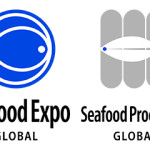Bad news can be hard to shake, a truth that most tilapia suppliers within the United States have come to know all too well.
A panel discussion surrounding value finfish that took place during the National Fisheries Institute’s 2018 Global Seafood Market Conference (GSMC) in Miami, Florida, on Monday, 23 January, touched upon the trials and tribulations tilapia has faced over recent years in the arena of U.S. consumer perception, where sensational press coverage has skewered the fish and placed it in a less than favorable light.
“Like anything, sensational negative press goes a long way to hurt a protein,” said Doug Brinsmade, foodservice director for The Fishin' Company, during the panel.
The perception challenges that have come up against tilapia have been a key talking point for the species in the past, so much so that NFI was spurred to launch “its single most exhaustive media scrub ever” in 2016, according to the organization’s Communications Manager Lynsee Fowler.
“2017’s Value Finfish panel noted lagging tilapia sales, which participants attributed to negative media stories,” Fowler said during a video reveal of the study’s findings.
For the study, NFI crawled over 4,600 stories published about tilapia in 2016, and found that 600 were relevant, unique posts. Each post was reviewed, catalogued, and coded as negative, neutral,or positive by the organization’s research team.
At the culmination of the review, NFI discovered that 77 percent of stories published in 2016 about tilapia were characterized as either neutral (33 percent) or positive (44 percent), while 23 percent were coded as negative. Ultimately, Fowler said, these results pointed the organization toward tilapia’s real media nemesis: content mills, or clickbait websites.
“The fundamental problem here is the outrageous stories promoted by clickbait websites…have no editorial oversight, so they can’t be challenged or corrected. So while the number of clickbait articles might be low, the impact can be high,” said Fowler.
Traditional and mainstream news outlets tended to present more balanced coverage of tilapia in 2016 than content mills, and have a more accessible avenue for correcting narratives than clickbait operations, added Mike Kocsis, vice president of aquaculture procurement for High Liner Foods, who led Monday’s panel.
“The clickbait websites are an entirely different beast – if you think about the business model they’re in, they are in the business of cash for clicks. So when it comes down to it, the topics may not be as relevant, the truthfulness of said topics may not be as relevant…it’s actually a really interesting way to look at it, because when you follow that logic, some people could say tilapia, in some ways, could just be collateral damage to a larger issue,” Kocsis said.
Finding out who is behind the promotion of clickbait websites will be fundamental in combating false messaging surrounding tilapia moving forward, the panelists said.
There is some good news for tilapia moving forward into 2018, according to panelist Eric Buckner, senior director of the seafood category for Sysco Corporation. Buckner noted the traction tilapia has been gaining in the healthcare customer segment.
“The key element here is to look at the positive, and that is the amount of consumption in that healthcare space,” Buckner said. “When you look at the healthcare space, although there is a decline, the attributes of the product that make it accessible to that customer segment, from the benefits of it being a very mild, non-offensive pleasant performance and basically a clean slate for the units to utilize, that’s something that we need to really think about – how we focus on those positive attributes. And yes, quality is going to drive all of that, because if we’ve got a healthy protein and a sustainable product, then we have an opportunity that exists, and we have to be able to utilize positives to drive consumption and turn the trend.”
Buckner also noted the momentum independent operators have been offering tilapia.
“When you look at customer segmentation, you see two very bright spots, and that’s healthcare and independent operators,” he said. “As we bring innovation, as we bring solutions to operators, that’s how we can change some of these trends. The negative about it is there, it’s very real, but the reality of it is that it’s a very efficient protein to grow, it’s a very affordable protein to get to the consumers, so I think that that’s really where we can change the trend."






